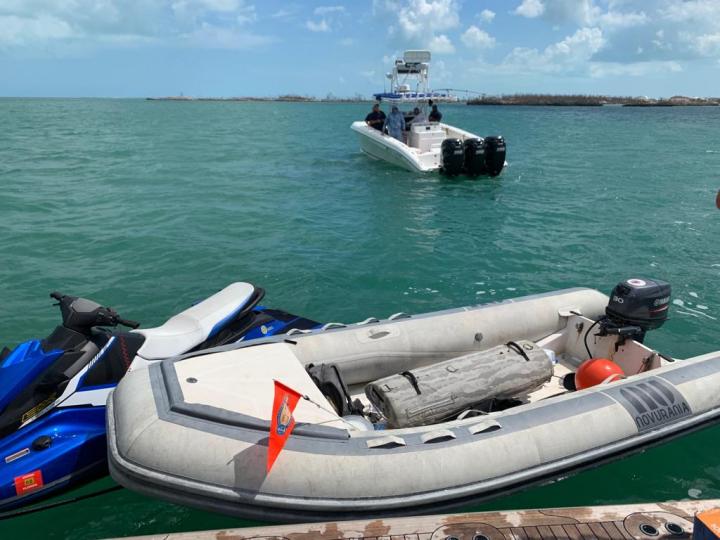
Credit: (Photo courtesy of Hydronalix)
ARLINGTON, Va.–Last month–a day after Hurricane Dorian finished lashing Abaco Island in the Bahamas–a chaotic scene greeted the first disaster responders arriving at the island’s Marsh Harbor.
On land, homes sat in ruins, palm trees lay uprooted, and yachts and sailboats were strewn about like toys. In the harbor itself, vessels were capsized or sunk–and telephone poles, cars, house roofs and other underwater debris blocked the disaster-relief ship from sailing to the main pier.
But the responders had a tool to get ashore, so they could provide medical care and supplies to stricken islanders. It was EMILY the robotic lifeguard–officially known as the Emergency Integrated Lifesaving Lanyard–a remote-controlled unmanned surface vehicle that has proven its mettle saving imperiled swimmers during natural disasters and humanitarian crises.
Equipped with high-definition sonar and sophisticated sensors, EMILY revealed underwater debris that posed navigational hazards. It also used specialized software to enable disaster responders to map a safe passage through Marsh Harbor. Within two hours, the relief ship was ashore distributing much-needed supplies. Throughout the following week, EMILY mapped more channels in other storm-ravaged areas of the Bahamas.
EMILY’s inventor is Tony Mulligan, CEO and president of Hydronalix, a maritime robotics company. The vehicle is the successful culmination of a collaboration among Mulligan, the Office of Naval Research (ONR) and the Navy’s Small Business Innovation Research (SBIR) and Small Business Technology Transfer (STTR) programs. SBIR provides the Navy with innovative advances in technology created by small firms–while STTR transitions products developed by both small businesses and research institutions to the Navy and Marine Corps.
The technology in EMILY took a long road over 18 years–advancing from marine mammal research to unmanned aerial vehicles (UAVs) in Iraq to lifesaving rescue innovation.
“EMILY’s 18-year progression is inspiring,” said SBIR Director Bob Smith. “From whale-monitoring efforts, to supporting warfighters in harm’s way, to impacting global humanitarian efforts, EMILY is a classic ‘overnight success story’ years in the making.”
EMILY’s roots stretch back to 2001, when Mulligan received ONR and SBIR-STTR funding to develop a computer- and sensor-operated UAV to monitor whale movements during Navy sonar testing. However, when the wars in Afghanistan and Iraq erupted, Mulligan improved and transformed his vehicles into Silver Fox UAVs in 2003, which helped U.S. troops conduct aerial surveillance and reconnaissance missions.
In 2011, Mulligan received Navy funding to disassemble existing Silver Foxes and use their components–such as motor parts and navigation computers–to build unmanned surface vehicles for hurricane tracking, tsunami response and search-and-rescue missions. This technology was used to develop EMILY.
Mulligan and his business partner, Robert Lautrup (executive vice president of Hydronalix and EMILY co-inventor), still work with ONR and SBIR-STTR to develop components to improve EMILY and design spinoffs focusing on search and rescue, law enforcement, water sampling and Navy mine counter-measure missions.
Mulligan has provided more than 400 EMILY vehicles to navies, coast guards and search-and-rescue units in the U.S. and other countries including Thailand, South Korea, Indonesia, Singapore, the United Kingdom, France, Mongolia, Brazil, Mexico and Greece.
###
EMILY is one of many successful partnerships involving small businesses, ONR and Navy SBIR-STTR. To solicit additional small business partners, SBIR recently announced an expanded funding opportunity in a Broad Agency Announcement (BAA), which is a request for scientific or research proposals in areas of naval interest. Learn more at https:/
Media Contact
David Smalley
[email protected]
Original Source
https:/




